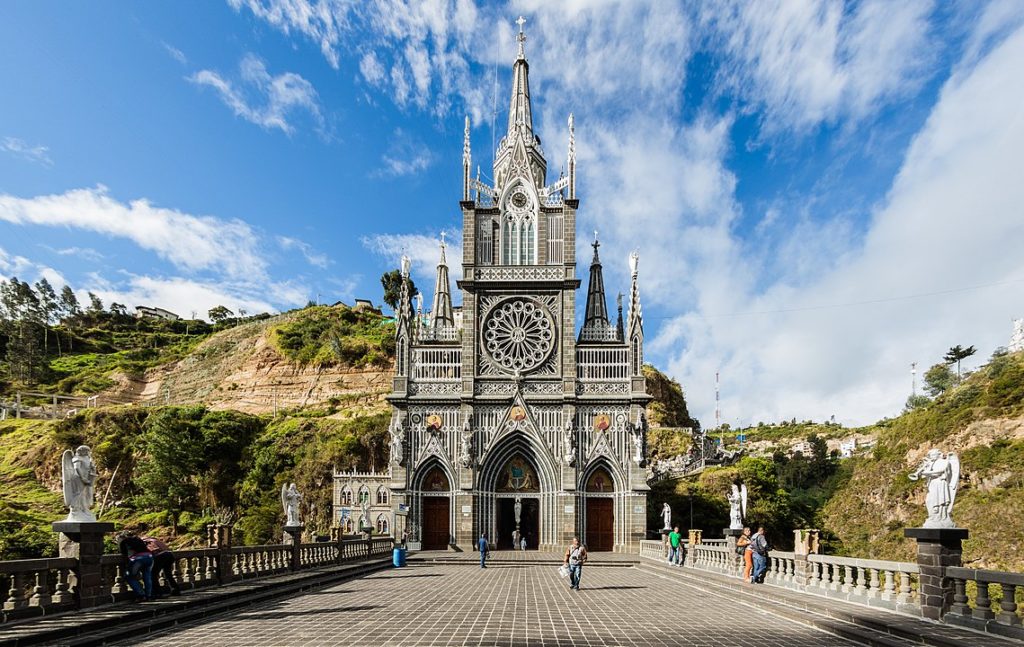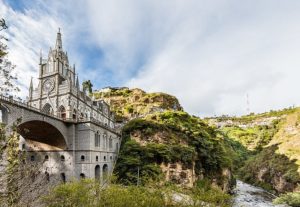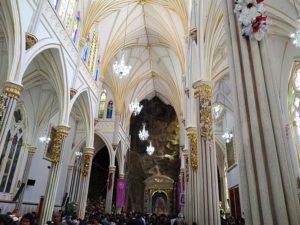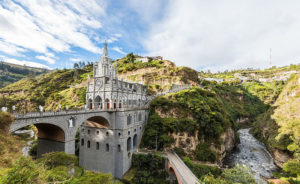Ipiales is a city and Catholic bishopric in Nariño Department, southern Colombia, near the border with Ecuador. It is located on a high plateau called “Tuquerres e Ipiales,” in the Andes Mountains. The town sits on the banks of the Guáitara River, approximately 2,900 m above sea level and is known as the “city of the three volcanoes.” The town’s main attraction is the impressive architecture of the Las Lajas cathedral, the episcopal see of the Roman Catholic Diocese of Ipiales.

The National Shrine Basilica of Our Lady of Las Lajas, commonly called Las Lajas Shrine, is a basilica church located in southern Colombia. The basilica is situated within the municipality of Ipiales, in the Nariño Department, and is built inside the canyon of the Guáitara River. Las Lajas Sanctuary is an example of Gothic Revival style, with a vaulted ceiling, buttresses, and spires.

The inside of the church is white with gold trim, and it is 27.5 m and 15 m wide. Las Lajas Sanctuary is 100m tall from the bottom of the Guáitara Canyon against one side of the canyon on a hill. The bridge towards the church is located 50 m above the river, it is 20 m long and 17 m wide, has two arcs. This bridge forms an impressive plaza in the front of the church.

Inside, the three naves are covered with vaults. It has mosaics in fiberglass and day lighting gives your light that filters through the stained glass made by the Italian Walter Wolf. The fund or apse of the three ships is the natural stone wall of the canyon and in the central nave is an illuminating the image of the Virgen del Rosario, painted by an unknown author on a stone slab. The basement of the temple itself, besides the two arches of the bridge, is a Romanesque crypt with three naves covered with barrel vaults of ashlar stone structure and is dedicated to the Sacred Heart of Jesus.















